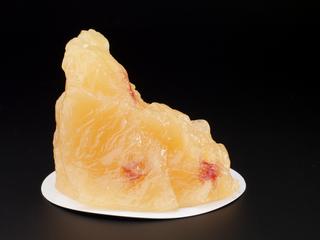
Cell culture flask from University of Oxford's Clinical BioManufacturing Facility
- Made:
- 2015-2020 in United States
- maker:
- Corning Incorporated
HYPERflask ® brand, made by Corning, multilayered, rectangular flask of the type used for growing up adherent cells and the virus clone used to make the vaccine's starting material, at the Clinical BioManufacturing Facility (CBF), University of Oxford during the early development for the ChAdOx1 nCoV-19, Oxford/AstraZeneca COVID-19 vaccine
With its multi-layers, High Yielding Performance Flask known as the HYPERFlask offers ten times the growth area for cell cultures in the footprint of a traditional 175 cm² laboratory flask.
After the release of the sequence for the SARS-CoV-2 virus in January 2020, researchers at the Jenner Institute put together their first designs for a possible vaccine, drawing on decades of work on similar viruses. The vaccine uses a deactivated chimpanzee common cold virus, known as an adenovirus, to deliver the genetic code for the coronavirus (SARS-CoV-2), spike protein. This is a protein on the SARS-CoV-2 virus which it needs to enter our cells. Later, if the person comes into contact with the COVID-19 virus, the person’s immune system will recognise the spike protein and be ready to defend the body against it.
Within 5 weeks, the CBF’s Starting team began making those ideas a reality. On the 6th of March 2020, the Production Team started small-scale manufacture of the Oxford team’s vaccine known as ChAdOx1 nCoV-19. After several stages of cell growth, harvesting and purification the first vials were filled on 2nd April 2020. After rigorous checks, the first volunteers were injected with the vaccine on 23 April 2020. On 30 April 2020, Oxford University signed a deal with pharmaceutical company AstraZeneca to mass-produce the vaccine. This included a clause that no profit would be made from providing the vaccine to low-income countries. Large scale clinical trials followed before the vaccine was approved by the Medicines and Healthcare products Regulatory Agency (MHRA) on 30th December 2020. 5 days later, Brian Pinker was the first person to receive a dose of the Oxford/AstraZeneca vaccine. Over 3 billion doses have been delivered worldwide.
The speed at which the University of Oxford team could respond is due years of knowledge on coronaviruses and the close links between the Jenner Institute and Clinical BioManufacturing Facility. For over 20 years the University of Oxford’s CBF has been their primary facility for producing ‘Investigational Medicinal Products’ for use in early phase clinical trials, including vaccine development for malaria, HIV and tuberculosis.
Details
- Category:
- Public Health & Hygiene
- Object Number:
- 2022-1127
- Materials:
- plastic
- Measurements:
-
overall: 140 mm x 80 mm x 90 mm,
- type:
- flask




